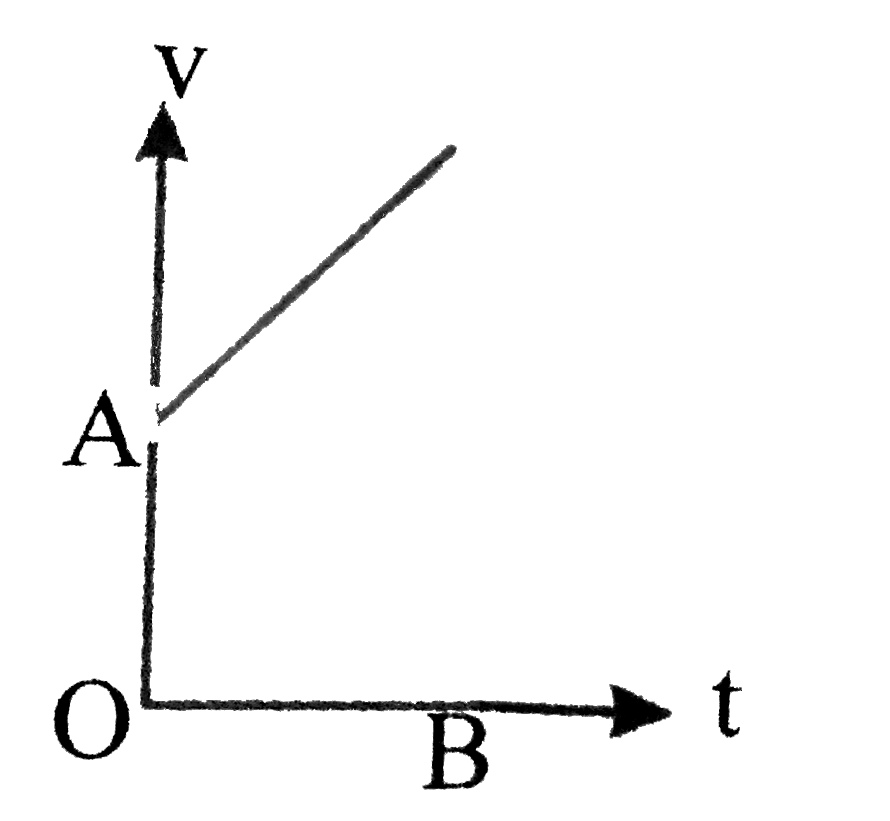The motion of a particle in straight line is an example of
constant velocity motion
uniformly acceleration motion
non-uniformly acceleration motion
zero velocity motion
The correct Answer is:B
To determine the type of motion of a particle in a straight line, we need to analyze the options provided:
1. Constant Velocity Motion: In this type of motion, the particle moves with a constant speed in a straight line, which means the acceleration is zero. However, the question asks for the general case of motion in a straight line, which can include other types of motion as well. Thus, this option is not the most accurate.
2. Uniformly Accelerated Motion: In uniformly accelerated motion, the velocity of the particle changes by equal amounts in equal intervals of time. This type of motion can indeed occur in a straight line, making this option a valid example of straight-line motion.
3. Non-Uniformly Accelerated Motion: In this case, the velocity of the particle changes by unequal amounts in unequal intervals of time. While this can also occur in a straight line, it does not represent a specific type of motion that is consistently straight, as the acceleration can vary.
4. Zero Velocity Motion: This implies that the particle is at rest and not moving at all. While this is a state of motion, it does not represent the general case of motion in a straight line.
Based on the analysis of the options:
- The correct answer is Option 2: Uniformly Accelerated Motion. This type of motion can occur in a straight line and is characterized by a constant rate of change of velocity.
3. Evaluate Uniformly Accelerated Motion: Understand that this involves a constant change in velocity over equal time intervals, which can occur in a straight line.
4. Evaluate Non-Uniformly Accelerated Motion: Acknowledge that this type involves varying changes in velocity, which does not consistently represent straight-line motion.
5. Evaluate Zero Velocity Motion: Realize that this represents a state of rest and does not indicate motion.
6. Select the correct option: Based on the evaluations, conclude that the motion of a particle in a straight line is best represented by uniformly accelerated motion.
Topper's Solved these Questions
- MOTION IN A PLANEBOOK - DC PANDEY ENGLISHCHAPTER - MOTION IN A PLANEEXERCISE - (B) Meical entrance special format questions (Mathch the columns)
6 Videos
- MOTIONBOOK - DC PANDEY ENGLISHCHAPTER - MOTIONEXERCISE - Medical entrances gallery
19 Videos
- PROJECTILE MOTIONBOOK - DC PANDEY ENGLISHCHAPTER - PROJECTILE MOTIONEXERCISE - Level - 2 Subjective
10 Videos
Similar Questions
Motion in Straight line
View SolutionThe motion of a particle along a straight line is described by equation : x=8+12t−t3 where x is in metre and t in second. The retardation of the particle when its velocity becomes zero is.
View SolutionThe motion of a particle along a straight line is described by equation : x=8+12t−t3 where x is in meter and t in second. The retardation of the particle when its velocity becomes zero is.
View SolutionThe motion of a particle along a straight line is described by the function x=(2t−3)2, where x is in metres and t is in seconds. Find
(a) the position, velocity and acceleration at t=2s.
(b) the velocity of the particle at origin.
View SolutionThe motion of a particle along a straight line is described by the function x=(2t−3)2, where x is in metres and t is in seconds. Find
(a) the position, velocity and acceleration at t=2s.
(b) the velocity of the particle at origin.
View SolutionThe position of a particle moving on a straight line is proportional to the cube of the time elapsed. How does the acceleration of the particle depend on time elapsed?
View SolutionThe motion of a particle along a straight line is described by the function s=6+4t2−t4 in SI units. Find the velocity, acceleration, at t = 2s, and the average velocity during 3rd second.
View Solution
The variation of quantity A with quantity B is plotted in the fig. Describes the motion of a particle in a straight line.
(a) Quantity B may represent time.
(b) Quantity A is velocity if motion is uniform.
(c) Quantity A is displacement if motion is uniform
(d) Quantity A is velocity if motion is uniformly accelerated.
View SolutionIdentify the correct graph represeriting the motion of a particle along a straight line With constant acceleration with zero initial velocity.
View SolutionFollowing statements are given for the motion of a particle along the straight line. Choose correct statement out of these :
View Solution
